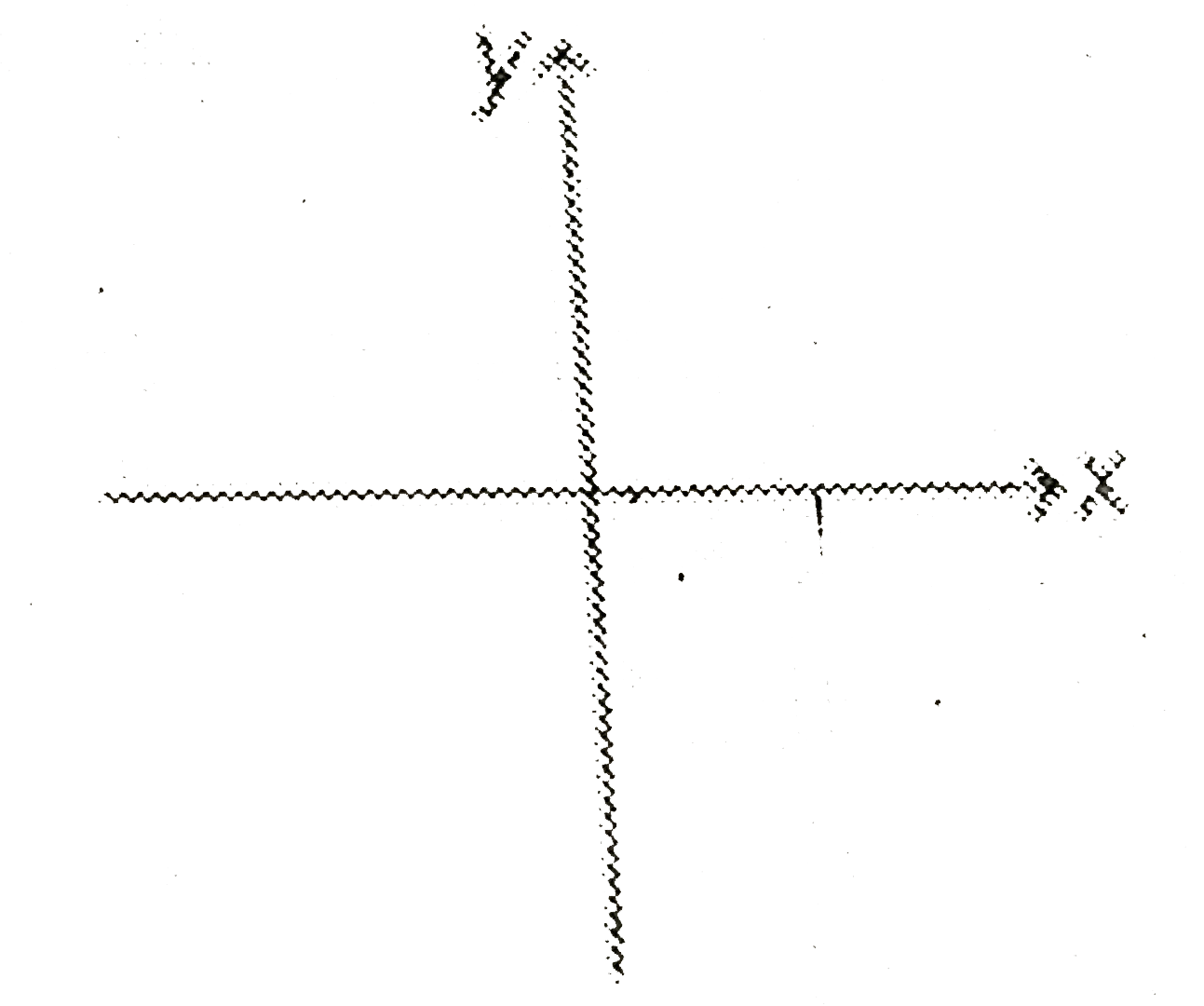If x=5t+3t2 and y=4t are the x and y co-ordinates of a particle at any time t second where x and y are in metre, then the acceleration of the particle
is zero throughout its motion
is a constant throughout its motion
depends only on its y component
varies along both x and y direction
The correct Answer is:B
To find the acceleration of the particle given the equations for its position in the x and y coordinates, we can follow these steps:
Step 1: Write down the equations for x and y
The position of the particle is given by:
- x(t)=5t+3t2
- y(t)=4t
Step 2: Find the velocity components
The velocity components can be found by differentiating the position functions with respect to time t.
- For the x-component of velocity vx:
vx=dxdt=ddt(5t+3t2)=5+6t
- For the y-component of velocity vy:
vy=dydt=ddt(4t)=4
Step 3: Write the velocity vector
The velocity vector →v can be expressed as:
→v=vx^i+vy^j=(5+6t)^i+4^j
Step 4: Find the acceleration components
The acceleration components can be found by differentiating the velocity functions with respect to time t.
- For the x-component of acceleration ax:
ax=dvxdt=ddt(5+6t)=6
- For the y-component of acceleration ay:
ay=dvydt=ddt(4)=0
Step 5: Write the acceleration vector
The acceleration vector →a can be expressed as:
→a=ax^i+ay^j=6^i+0^j
Step 6: Conclusion about the acceleration
The acceleration of the particle is:
→a=6^i
This indicates that the acceleration is constant and directed along the x-axis.
Final Answer
The acceleration of the particle is constant and equal to 6m/s2 in the x-direction.
---
The position of the particle is given by:
- x(t)=5t+3t2
- y(t)=4t
The velocity components can be found by differentiating the position functions with respect to time t.
vx=dxdt=ddt(5t+3t2)=5+6t
vy=dydt=ddt(4t)=4
The velocity vector →v can be expressed as:
→v=vx^i+vy^j=(5+6t)^i+4^j
The acceleration components can be found by differentiating the velocity functions with respect to time t.
ax=dvxdt=ddt(5+6t)=6
ay=dvydt=ddt(4)=0
The acceleration vector →a can be expressed as:
→a=ax^i+ay^j=6^i+0^j
The acceleration of the particle is:
→a=6^i
This indicates that the acceleration is constant and directed along the x-axis.
The acceleration of the particle is constant and equal to 6m/s2 in the x-direction.
Topper's Solved these Questions
- MOTION IN A PLANE BOOK - NCERT FINGERTPS ENGLISHCHAPTER - MOTION IN A PLANE EXERCISE - HOTS
6 Videos
- MOTION IN A PLANE BOOK - NCERT FINGERTPS ENGLISHCHAPTER - MOTION IN A PLANE EXERCISE - EXEMPLER PROBLEMS
9 Videos
- MECHANICAL PROPERTIES OF SOLIDSBOOK - NCERT FINGERTPS ENGLISHCHAPTER - MECHANICAL PROPERTIES OF SOLIDSEXERCISE - Assertion And Reason
15 Videos
- MOTION IN A STRAIGHT LINEBOOK - NCERT FINGERTPS ENGLISHCHAPTER - MOTION IN A STRAIGHT LINEEXERCISE - NCERT Exemplar
6 Videos
Similar Questions
The x and y co-ordinates of a partilce at any time t are given by:
x=7t+4t2 and y=5t
The acceleration of the particle at 5s is:
View SolutionThe x and y coordinates of a particle at any time t are given by x=7t+4t2 and y=5t, where x and t is seconds. The acceleration of particle at t=5s is
View SolutionThe x and y coordinates of a particle at any time t are given by x=7t+4t2 and y=5t, where x and t is seconds. The acceleration of particle at t=5s is
View SolutionThe x and y co-ordinates of a particle at any time t are given as x=2t2+14 and y=1.5t−7. The acceleration of particle at t=7sec is :
View SolutionThe x and y coordinates of a particle at any time t are given by x=2t+4t2andy=5t , where x and y are in metre and t in second. The acceleration of the particle at t = 5 s is
View SolutionA xandy co-ordinates of a particle are x=Asin(ωt)andy=Asin(ωt+π/2). Then, the motion of the particle is

View SolutionThe coordinates of a moving particle at any time t are given by, x=2t3 and y=3t3. Acceleration of the particle is given by
View SolutionThe x and y coordinates of the particle at any time are x=5t−2t2andy=10t respectively, where x and y are in meters and t in seconds. The acceleration of the particle at t=2s is:
View SolutionThe x and y coordinates of the particle at any time are x=5t−2t2andy=10t respectively, where x and y are in meters and t in seconds. The acceleration of the particle at t=2s is:
View SolutionThe coordinates of a moving particle at any time t are given by x=ct and y=bt2. The speed of the particle is given by
View Solution
